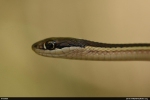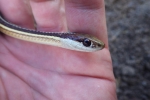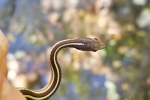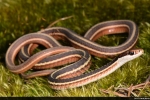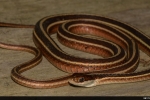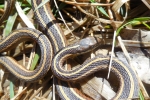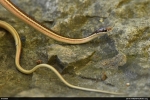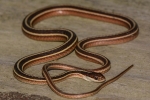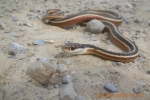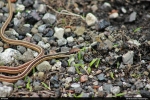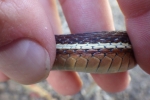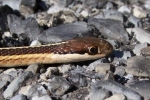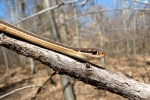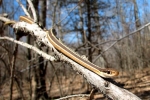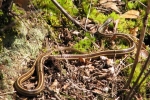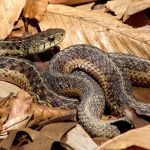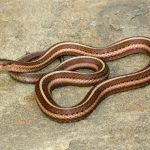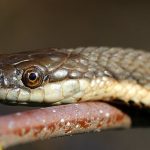Ribbonsnakes
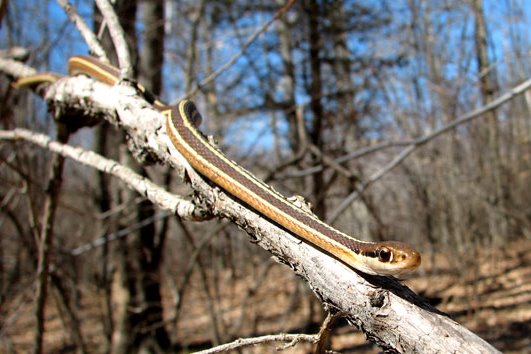
Scientific Name: Thamnophis s. sauritus (Eastern) Thamnophis s. septentrionalis (Northern)
Size: 20 - 34 inches (50.8 - 86.3 cm)
Status: Species of special concern
Habitat:
Rocky hillsides, grassy fields, deciduous forest, swamps, near ponds, or bogs with a permanent water source. May be found in trees or shrubs, or on land, near or in water..
Description:
A slender version of the eastern garter snake, the ribbon snake has three well defined light yellow stripes against a black or reddish brown background on its back. Two stripes are located on the side of the body and one along the middorsal. A dark brownish stripe may be present above the belly scales. Belly is white or yellow in color and unmarked, scales are keeled and with an undivided anal plate. The supralabials are white, offset by a black line. Lives in wet places often basking in bushes from which it will drop into the water to escape predators. Feeds mostly on amphibians. Juveniles are similar to adults in appearance.
- The dorsal has three light yellow longitudinal stripes; one vertebral and two lateral.
- The region between the vertebral and lateral stripes ranges from reddish brown to black.
- The ventrolateral region is medium to dark brown.
- The ventral is yellow to green.
- The head is brown with black maculations.
- The parietals often have light spots.
- The supralabials are white, offset by a black line.
- The preocular and first postocular are often white.
- Long and slender species
- Slender body and a very long tail.
- The head is moderately distinct from the body.
- Large eyes
- Semi-arboreal & semi-aquatic
- Similar to adults.
- 19 scale rows at midbody.
- 19 scale rows at anterior.
- 17 scale rows near the tail.
- 143-177 ventral scales
- 94-136 subcaudals scales | 2 rows of subcaudals
- 1 loreal scales
- 1 preocular scale
- 3 postoculars scales
- 1 + 2 + 3 temporal scales
- 7-8 supralabials
- 10 infralabials
- Anal plate is undivided


References:
- Hulse, C. and McCoy C. J. and Ellen Censky ,1998. Amphibians and Reptiles of Pennsylvania and the Northeast. 331-336pp.
- Ernst, Carl H. and Ernst, Evelyn M. ,2003. Snakes of the United States and Canada. 419-424pp.
- Bob Hamilton
- Kyle Loucks
- Bob Ferguson
- Chris Bortz
- Travis Russell
- Andy Weber
- Brandon Hunsberger
Heads up!
Please contribute your observation of this and other herps to the Pennsylvania Amphibian and Reptile Survey. Your help is needed.
